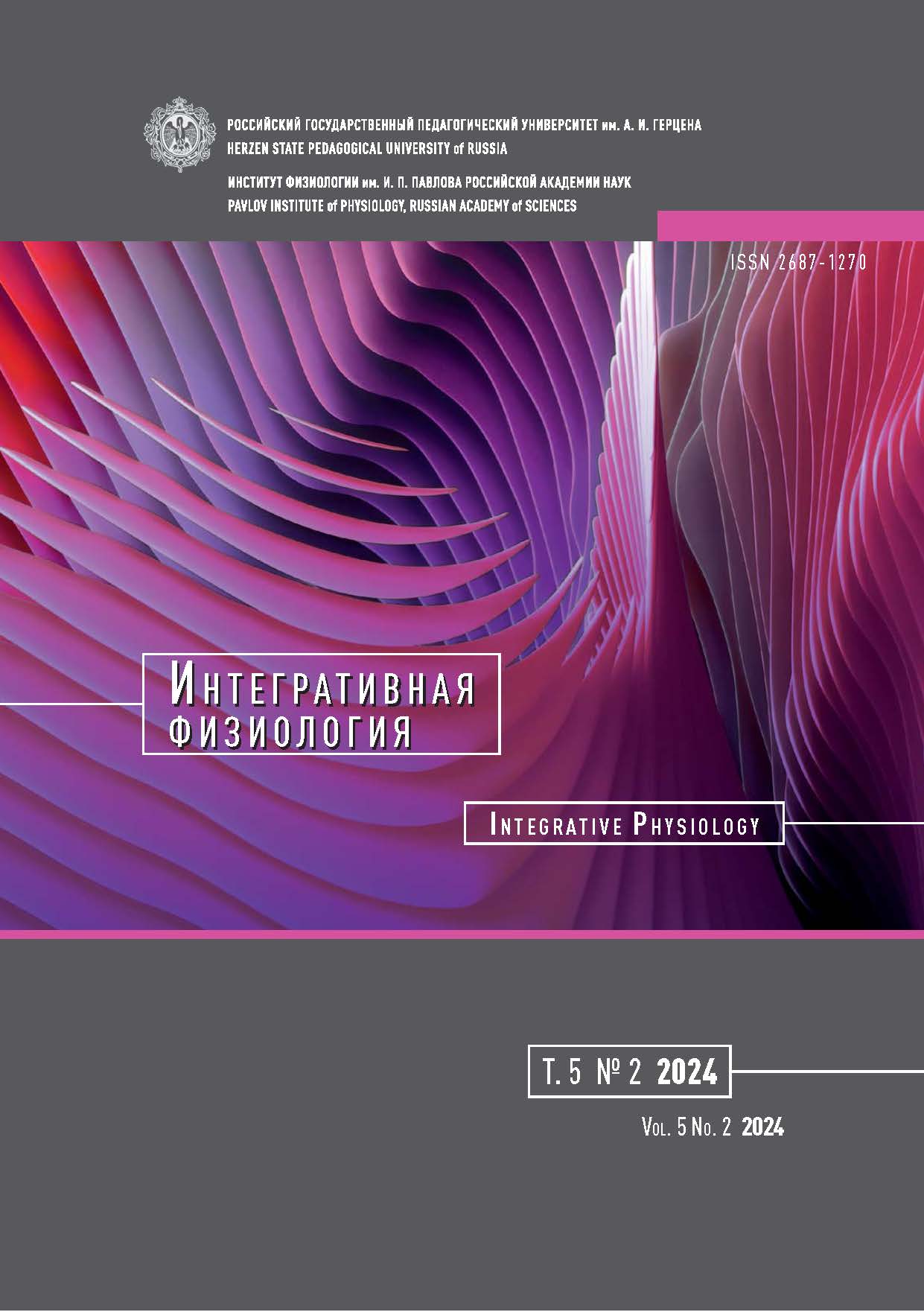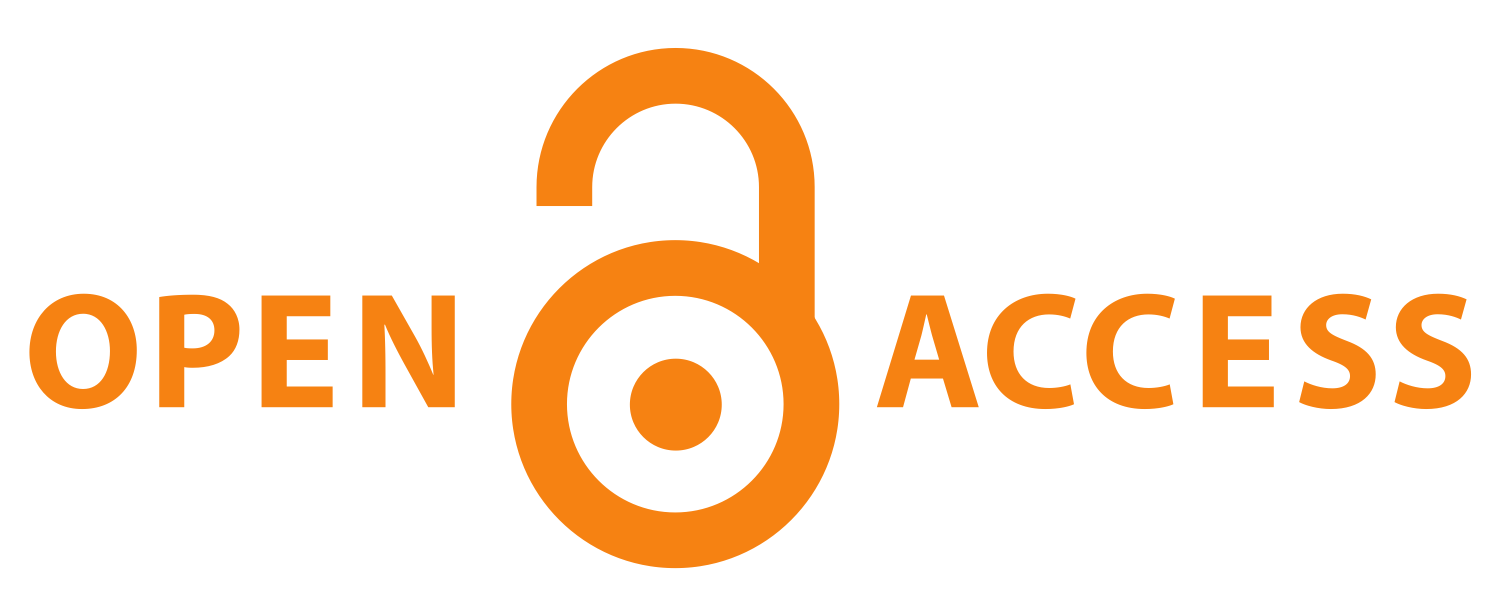Central and hormonal mechanisms of adaptation to desynchronization stress
DOI:
https://doi.org/10.33910/2687-1270-2024-5-2-196-204Keywords:
circadian rhythm desynchronization, rats, CRMP2, indirect ELISA test, hypothalamus, epiphysis, elevated plus-maze, cortisolAbstract
The article reports the results of an experiment with male Wistar rats who were subjected to 14-day desynchronization of circadian rhythm. In the first series of experiments, the impact of desynchronization on the levels of collapsin-response mediator protein 2 (CRMP2) in the hypothalamus and epiphysis was examined using a solid-phase indirect ELISA test. An upregulation of CRMP2 in both the hypothalamus and epiphysis was observed. In the second series of experiments, rat behavior was assessed using the elevated plus-maze (EPM) test. As a result, two groups were formed: (1) control group — received inactive CRMP2; (2) experimental group — received CRMP2. Both preparations were administered intranasally 24 hours before and 7 days after desynchronization. After the desynchronization period, rats from both groups were re-tested in the EPM, and the number and duration of specific behavioral acts were recorded. The experimental group showed a three-fold decrease in the number of rearing (p < 0.001) and total duration of grooming (p < 0.001) in the closed arms of the maze, with no change in the number of hanging behaviors, relative to pre-desynchronization levels. The rats then were sacrificed, and serum samples were collected to assess cortisol levels via ELISA. The cortisol level in the experimental group was significantly lower than in the control group (p < 0.001). The study suggests that CRMP2 exhibits anxiolytic activity, helping the organism to adapt to desynchronization stress by influencing circadian rhythm disturbances in specialized brain structures and through hormonal regulation.
References
Catty, D., Raikundalia Ch. (1989) Immune enzyme analysis. In: D. Catty (ed.). Antibodies. Vol. II: A Practical Approach. Oxford: Oxford University Press; IRL Press, pp. 152–238. (In English)
do Amaral, F. G., Cipolla-Neto, J. (2018) A brief review about melatonin, a pineal hormone. Archives of Endocrinology and Metabolism, vol. 62, no. 4, pp. 472–479. https://doi.org/10.20945/2359-3997000000066 (In English)
Gaisina, A. A., Mekhtiev, A. A., Nurullayeva, A. N. et al. (2022) The impact of background γ-radiation on erythrocyte nuclear pathology, the serotonergic system, and cytochrome P-450 in hens (Gallus gallus domesticus) from Azerbaijan. Ecotoxicology, vol. 31, no. 5, pp. 846–851. https://doi.org/10.1007/s10646-022-02540-8 (In English)
Garina, D. V., Bolshakov, V V., Toropygin, I. Yu. et al. (2018) Rol’ neyrospetsifichnogo digidropirimidinaza-podobnogo belka 2 (DPYL2) v formirovanii prostranstvennoj pamyati u kostistykh ryb [The role of neuro-specific dihydropyrimidinase-related protein 2 (DPYL2) on spatial memory formation in teleosts]. Regulatory Mechanisms in Biosystems, vol. 9, no. 1, pp. 11–14. http://dx.doi.org/10.15421/021802 (In Russian)
Lakin, G. F. (1990) Biometriya [Biometrics]. Moscow: Vysshaya shkola Publ., 352 p. (In Russian)
Mekhtiev, A. A., Allahverdiyeva, T. N., Movsum-zadeh, S. K. (2017) DNA integrity-protecting and survival-promoting activity of serotonergic system in sturgeon juveniles and sazans. Fish Physiology and Biochemistry, vol. 43, no. 4, pp. 1153–1160. https://doi.org/10.1007/s10695-017-0360-5 (In English)
Mustafayev, N. J., Mekhtiev, A. A. (2014) Kharakter izmeneniya urovnya serotonin-moduliruemogo antikonsolidatsionnogo belka i tsitokhroma Р-450 v tkanyakh vostochnoy bystryanki Alburnoides bipunctatus eichwaldi iz rek Azerbajdzhana [Character of changes of the level of serotonin-modulated anticonsolidation protein and of cytochrome P-450 in tissues of the eastern alburnoid Alburnoides bipunctatus eichwaldi from rivers of Azerbaijan]. Journal of Evolutionary Biochemistry and Physiology, vol. 50, no. 3, pp. 190–195. (In Russian)
Nakamura, F., Ohshima, T., Goshima, Y. (2020) Collapsin response mediator proteins: Their biological functions and pathophysiology in neuronal development and regeneration. Frontiers in Cellular Neuroscience, vol. 14, article 188. https://doi.org/10.3389/fncel.2020.00188 (In English)
Pardeshi, Ch. V., Belgamwark, V. Sh. (2013) Direct nose to brain drug delivery via integrated nerve pathways bypassing the blood–brain barrier: An excellent platform for brain targeting. Expert Opinion on Drug Delivery, vol. 10, no. 7, pp. 957–972. https://doi.org/10.1517/17425247.2013.790887 (In English)
Walf, A., Frye, C. (2007) The use of the elevated plus maze as an assay of anxiety-related behavior in rodents. Nature Protocols, vol. 2, pp. 322–328. https://doi.org/10.1038/nprot.2007.44 (In English)
Downloads
Published
Issue
Section
License
Copyright (c) 2025 Parvin A. Zulfugarova, Arif A. Mekhtiev

This work is licensed under a Creative Commons Attribution-NonCommercial 4.0 International License.
The work is provided under the terms of the Public Offer and of Creative Commons public license Creative Commons Attribution 4.0 International (CC BY 4.0).
This license permits an unlimited number of users to copy and redistribute the material in any medium or format, and to remix, transform, and build upon the material for any purpose, including commercial use.
This license retains copyright for the authors but allows others to freely distribute, use, and adapt the work, on the mandatory condition that appropriate credit is given. Users must provide a correct link to the original publication in our journal, cite the authors' names, and indicate if any changes were made.
Copyright remains with the authors. The CC BY 4.0 license does not transfer rights to third parties but rather grants users prior permission for use, provided the attribution condition is met. Any use of the work will be governed by the terms of this license.







